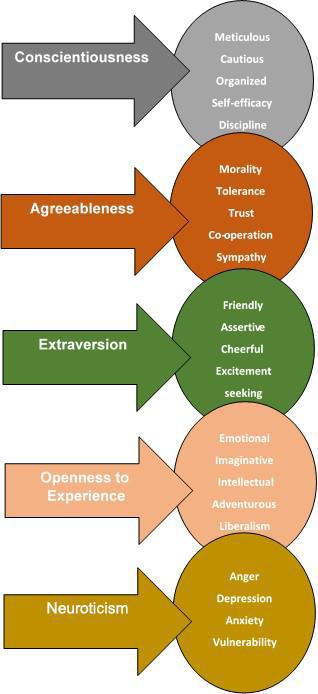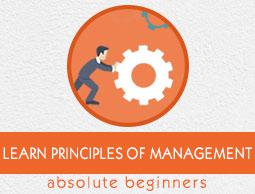Personalty and Attitude
Every organization is a mix of individuals with a variety of personalities, values, and attitudes. Personality and characteristics determine an employee’s behavior and ability to perform. Organizations hire people on the premise that they have certain knowledge, skills, abilities, personalities, and values which they bring to the workplace.
Role of Personality and Attitude in Organization
Personality contributes in part to workplace behavior because the way that people think, feel, and behave affects many aspects of the workplace. Attitude is another major factor to be considered here. People's personalities influence their behavior in groups, their attitudes, and the way they make decisions.
Today, at the hiring stage itself many organizations are attempting to screen applicants who are more likely to fit with their company culture. Organizations want to hire individuals with positive traits and attitudes to create a healthy environment.
Importance of Personality
Personality is a set of distinctive individual characteristics, including motives, emotions, values, interests, attitudes, and competencies. It is a stable set of characteristics representing internal properties of an individual, which are reflected in behavioral tendencies across a variety of situations.
It determines an employee’s fitment in terms of personality, attitude and general work style. In managing the day-to-day challenges, it is the personality of the people involved that affects the decisions taken in an organization. For example, a manager who cannot motivate his staff positively risks the integrity of the team which directly impacts the quality of service resulting in low productivity.
A manager’s personality greatly impacts motivation, leadership, performance, and conflict. The more understanding a manager has on how personality in organizational behavior works, the better equipped he will be to bring out the best in people and situation.
Personality Traits
Organizations have greatly evolved over the years in the way organizations operate and react to situations. Today they are leaner with fewer levels and more transparency. Managers are more participative involving subordinates at all levels. The shift towards more knowledge-oriented and customer-focused jobs have rendered more autonomy even at fairly low levels within organizations.
The constant volatility of the environment affecting organizations have made them open to changes and newness. All of these factors have contributed to personality being seen as more important now than it was in the past.
Behavior patterns have been a constantly evolving field of study where psychologists attempt to identify and measure individual personality characteristics, often called personality traits which are assumed to be some enduring characteristics that are relatively constant like dependable, trustworthy, friendly, cheerful, etc.
Modern personality theorists, Costa & McCrae, have researched and published their study of a ‘5 trait’ model which is now widely accepted among psychologists. These 5 aspects of personality are referred to as the 5-factors or sometimes just ‘the Big 5’.
The Big 5 Personality Traits
There are a number of traits on which persons can be ranked or measured. However, five core personality traits called the five factor model have been found to be of value for use in organizational situations.
Each of these 5 personality traits describes, relative to other people, the frequency or intensity of a person's feelings, thoughts, or behaviors. Every individual possesses all 5 of these traits, but in varying degree.
For example, we can describe two managers as ‘tolerant’. But there could be significant variation in the degree to which they exercise their tolerance levels.

The model categorizes people as possessing the following traits in varying degrees of high scope and low scope.
Conscientiousness
High Score − Productive and disciplined, rigid and single tasking
.
Low Score − Less structured, less productive, more flexible, inventive, and capable of multitasking.
Agreeableness
High Score − Co-operative, can be submissive, and empathetic to others.
Low Score − Demanding, challenging and competitive, sometimes even argumentative.
Extraversion
High Score − Energetic, Cooperative, talkative, enthusiastic and seek excitement.
Low Score − Loners, not sympathetic, difficult to understand, even a bit eccentric.
Openness to Experience
High Score − Beginners, curious and sometimes unrealistic.
Low Score − Grounded, practical and sometimes resist change.
Neuroticism
High Score − Calm, relaxed and rational. Sometimes can be perceived as being lazy and incapable of taking things seriously.
Low Score − Alert, anxious, sometimes unnecessarily worried.
The 5 personality traits exist on a continuum rather than as attributes that a person does or does not have. Each of these 5 traits is made up individual aspects, which can be measured independently.
The personality traits cannot be studied in isolation. Both positive and negative associations that these traits imply should be considered. For example, conscientiousness is necessary for achieving goals through dedication and focus. Conscientious people reach their goals faster. Conversely, conscientiousness is not very helpful in situations that require multi-tasking.
Other Personality Traits – Self Variables
In addition to the Big Five, researchers have proposed various other dimensions or traits of personality. They are called self-variables. People's understanding about themselves is called self-concept in personality theory and are important self-variables that have application in organizational behavior. These include self-monitoring, self-esteem, self-efficacy, etc.
Self-esteem is the self-perceived competence and self-image. It is related to higher levels of job satisfaction and performance levels on the job. People with low self-esteem experience high levels of self-doubt and question their self-worth.
Self-monitoring is the extent to which a person is capable of monitoring his or her actions and appearance in social situations.
Self-efficacy is the belief in one’s abilities that one can perform a specific task successfully. A person may have high self-efficacy in being successful academically, but low self-efficacy in relation to his/her ability to fix the car.
Personality thus impacts a person's performance in various dimensions in the workplace. Not every personality is suited for every job position, so organizations need to carefully consider personality traits and assign duties/roles accordingly. This can lead to increased productivity and job satisfaction.



